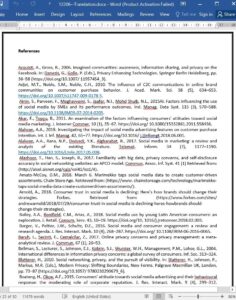Abstract
The ready access to and availability of social media has opened up a wealth of data that marketers are leveraging for strategic insight and digital marketing. Yet there is a lack of professional norms regarding the use of social media in marketing and a gap in understanding consumers’ comfort with marketers’ use of their social media data. This study analyzes a census-balanced sample of online adults (n = 751) to identify consumers’ perceptions of using social media data for marketing purposes. The research finds that consumers’ perceived risks and benefits of using social media have a relationship with their comfort with marketers using their publicly available social media data. The research extends the applicability of communication privacy management theory to social media and introduces marketing comfort—a new construct of high importance for future marketing research. Marketing comfort refers to an individual's comfort with the use of information posted publicly on social media for targeted advertising, customer relations, and opinion mining. In the context of the construct development, we find that targeted advertising is the strongest contributing component to marketing comfort, relative to the other two dimensions: opinion mining and customer relations. By understanding what drives consumer comfort with this emerging marketing practice, the research proposes strategies for marketers that can support and mitigate consumers’ concerns so that consumers can maintain trust in marketers’ digital practices.
1. Introduction
Just as the use of social media is changing how people live (QuanHaase and Young, 2010), learn (Gruzd et al., 2016), and connect with one another (van Dijck, 2012), fundamental shifts are also taking place within businesses with the introduction and use of social media. Consumers are using social media to generate information and share their experiences with their friends, companies, and broader online communities via posts, tweets, shares, likes, and reviews (Bailey et al., 2018; Dimitriu and Guesalaga, 2017; Martín-Consuegra et al., 2018). Businesses are taking notice as they adopt strategies and tools to engage in social media listening (Misirlis and Vlachopoulou, 2018; Schweidel and Moe, 2014). From a design retailer combining social media and predictive analytics to gather sentiment on potential new products (Amato-McCoy, 2018) to travel companies mining unstructured social media data to present users with personalized offers (Western Digital, 2018), marketers are particularly interested in understanding what their customers and the public are saying about their business (Tuten and Solomon, 2017).











